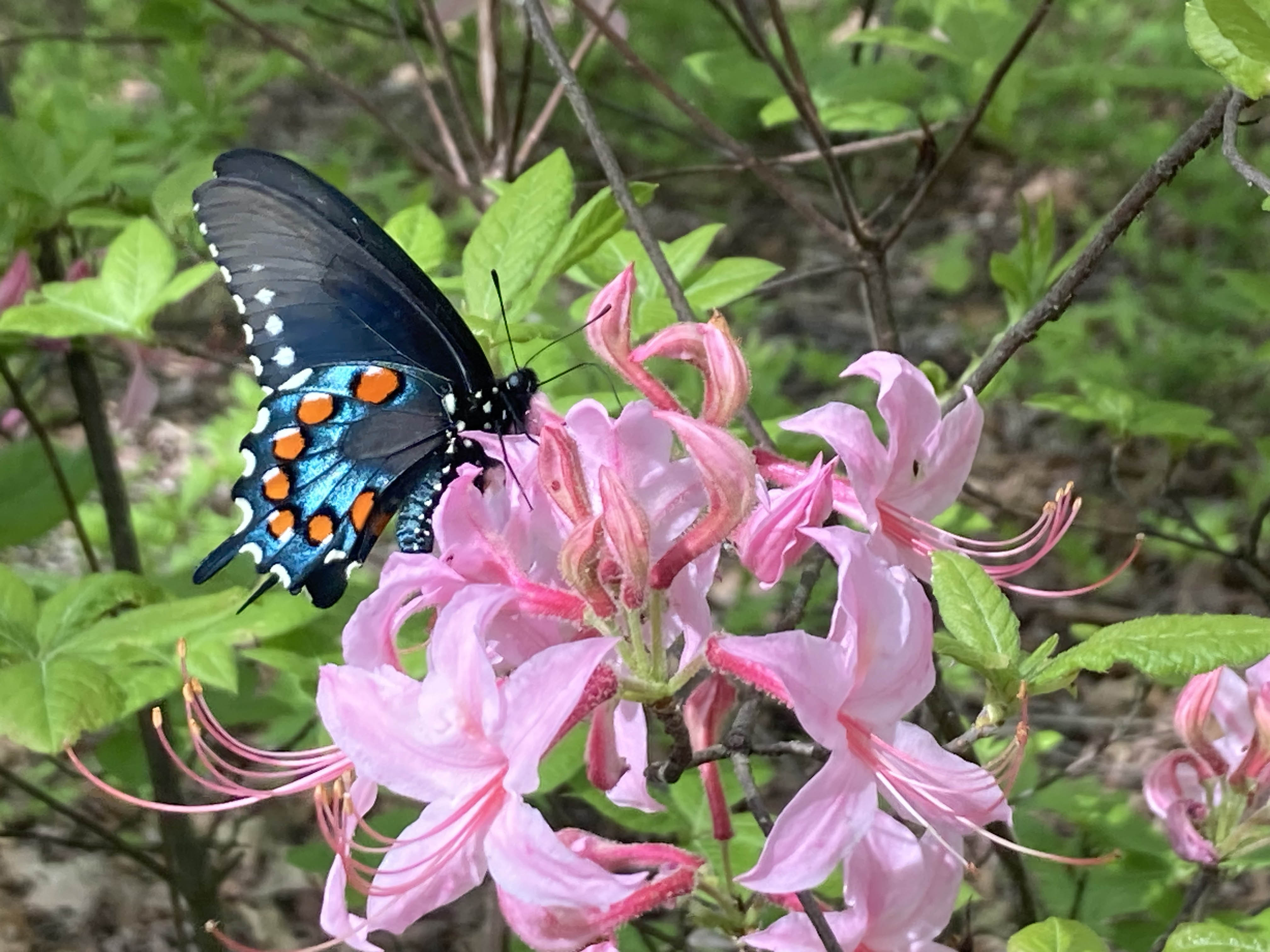Early Azalea Blooming
Contact
University of Arkansas System Division of Agriculture
Cooperative Extension Service
2301 S. University Ave.
Little Rock, AR 72204

Early Azalea Blooming
The native azaleas have put on a grand display this year here in the Ozarks. Probably the best in years. Wild honeysuckle is the name Ozarkers use, but officially they are called early or roseshell azaleas (Rhododendron prinophyllum). Of the 18 species of native azaleas found in North America, this is the most familiar species to me and the most common in the mountainous parts of Arkansas.
Native plants are all the rage in gardening but only a small subset of the garden world is interested in growing deciduous native azaleas. They are hard to grow, slow about it, and very particular about their growing conditions. Not characteristics that make for mass market sales.
Our roseshell azalea is a deciduous shrub (as are all our native North American azaleas) growing five to ten feet in height with leaves typically clustered in whorls near the ends of the branches. The fragrant, pink, funnel-shaped flowers appear just before or with the leaves in trusses of five to a dozen blooms at the end of their branches from late April until mid-May. Plants remain in bloom for about two weeks with individual plants in a colony opening at various times during the blooming season.
The common name - wild honeysuckle - used by many Ozark natives is because of the delightful clove-scented fragrance produced by the plants when they bloom.
The roseshell azalea is one of the most winter hardy of our wild azaleas, surviving temperatures as low as -25 degrees F. This characteristic came in handy this past winter, when a mild autumn was followed by a sudden drop to zero degrees around Christmas. It fried many plants we assumed were perfectly winter hardy in our region. This winter hardiness reflects the unusual distribution of this species. It is found throughout the Ozarks and Ouachitas, is absent from the Mississippi River Valley, and then picks up again in the Alleghany Mountains and moves further north into New England and adjacent parts of Canada.
I have found this wild azalea mostly at higher elevations and in cooler locations, but where it gets lots of sun. Like many members of the heath family, it will survive a long time in shady sites but it never blooms. I’ve seen parcels that have been logged burst into bloom with roseshell azaleas about three years later when they finally got the sunlight they need to grow and bloom. It typically grows on north-facing slopes, along high ridgelines, sometimes in open pastures, and along mountain streams but away from the water. Unlike the two native azaleas found further south in the state, the early azalea requires sharp drainage.
The spring 2023 blooming season seemed to be a spectacular year for this sometimes-finicky species. The spring of 2022 was unusually moist and relatively cool, so the native azaleas made a good flush of growth. By late June azaleas begin the process of setting flower buds, a process that takes several months to complete. The July heat and prolonged drought of last summer appeared to be just what certain spring-blooming woody natives needed for good flower bud development. Native azaleas and dogwoods made an especially good show. In contrast, the evergreen azaleas we see in gardens had a poor showing, probably because the early winter freeze zapped the flower buds.
So it goes in the garden. I like diversity in garden design and can’t buy into the notion of an only-natives garden. But gardening styles are not unlike any type of fashion. Wait a while and things will change. Undoubtedly future garden designs will be more sustainable but sustainability does not necessarily mean a natives-only approach.
Changing the notion that a neatly mowed and weed free lawn is not a good choice when sustainability is concerned is a harder sell with most homeowners than bickering over whether a non-native species has a place in the flowerbed.
